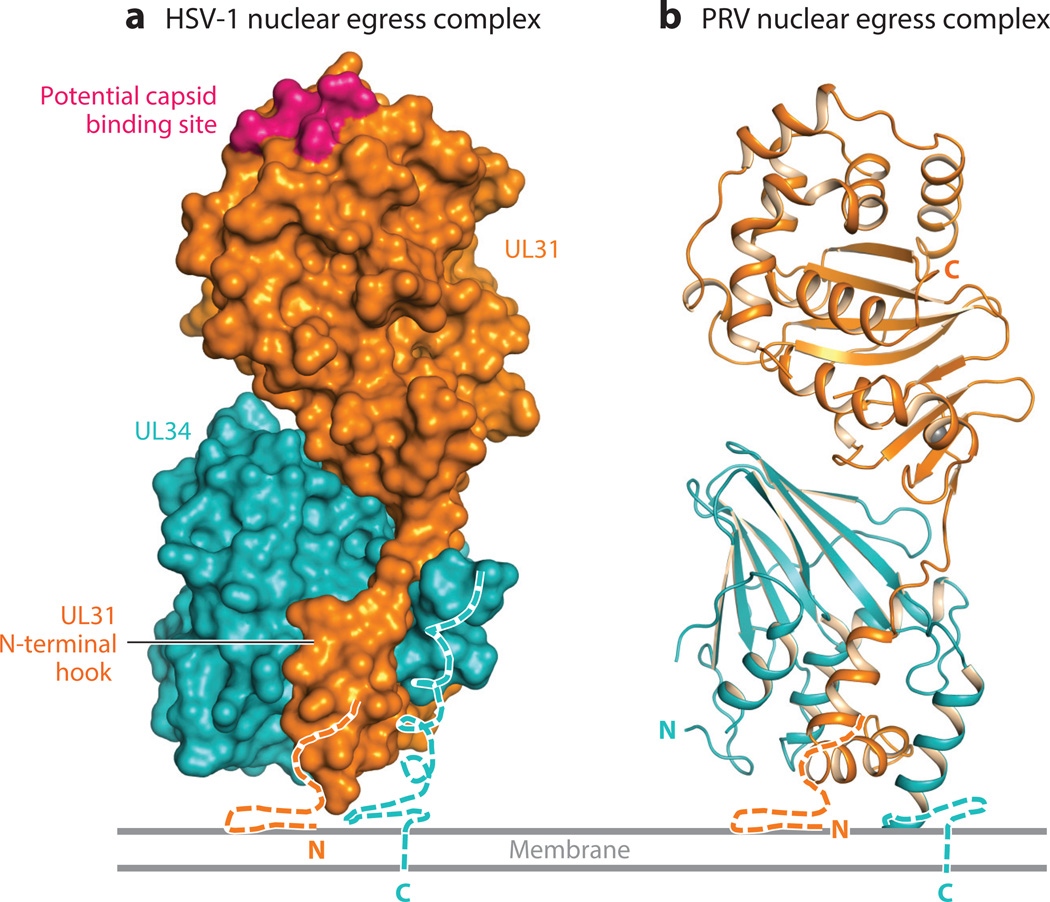Figure 2.
Structural features of the nuclear egress complex of (a) herpes simplex virus 1 (HSV-1; PDB: 4ZXS) and (b) pseudorabies virus (PRV; PDB: 4Z3U). UL31 (orange) and UL34 (teal) form an elongated complex, with UL31 wrapping its N-terminal hook around UL34. The two molecules interact extensively, which implies high binding affinity. The membrane-proximal end is located at the bottom of the heterodimer in this orientation. The regions important for membrane interaction are missing from the structure and are indicated schematically, along with the membrane. The highly conserved surface patch on the membrane-distal end of UL31 is the putative capsid-binding site.

